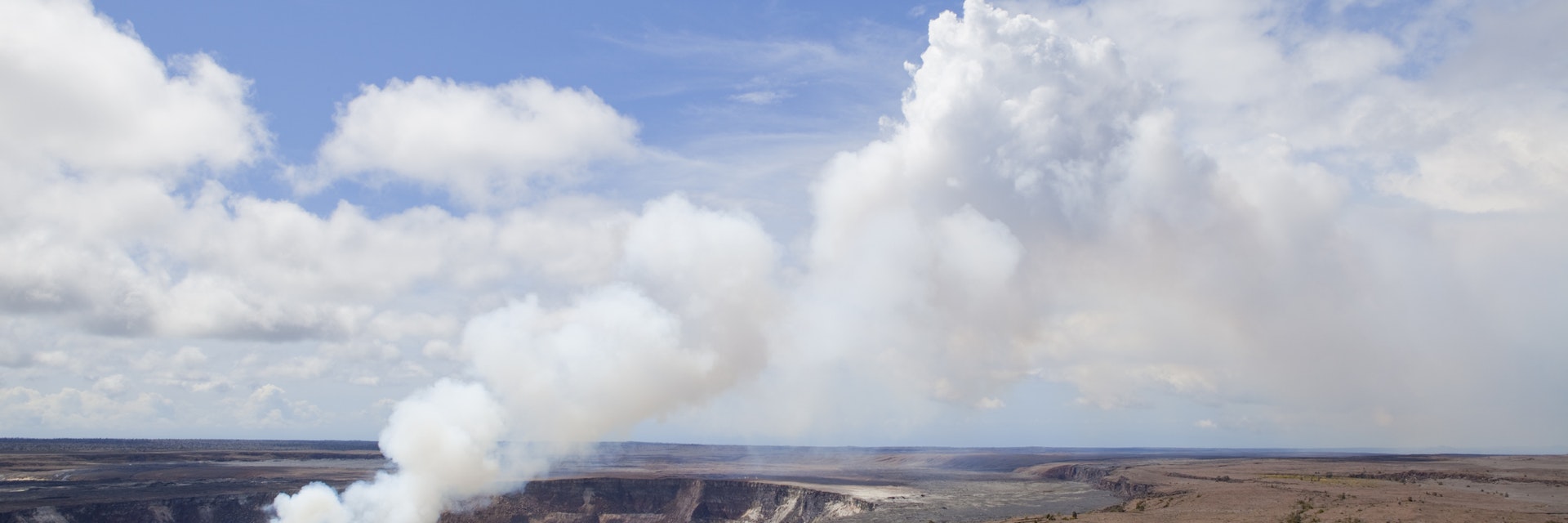The original Halemaʻumaʻu Overlook off Crater Rim Dr was closed in 2008 due to volcanic activity and the very real threat of death. For the next decade, Halemaʻumaʻu, then about 3000ft across and almost 300ft deep, maintained an active lava lake that shocked and awed all who visited Hawaiʻi Volcanoes National Park. But Pele struck again in 2018, when the crater collapsed as the Kilauea summit floor sunk some 1500ft and widened by more than 1 sq mile during the 2018 eruption.
During the eruption, Halemaʻumaʻu increased in size from 0.5 miles wide and 200ft deep to 1.5 miles wide and 2200ft deep – it is now big enough to be considered a caldera (geologists haven't made that call yet) and too big to be considered a pit crater.
Halemaʻumaʻu is a crater within the greater crater of Kilauea Caldera. The name means 'house of the ʻamaʻu fern,' though ancient songs also refer to it as Halemaumau without the ʻokina (glottal stops), or 'house of eternal fire.' From 1983 to 2018, it spewed a constant column of fire-breathed volcanic ash and gases like sulfur dioxide, which along with Puʻu ʻOʻo vent, created the vog (volcanic fog) that can carpet the island during eruption cycles. Then it stopped. But that's not all! Now out of view of visitors, its floor was discovered by scientists to be cradling a greenish pond of water in 2019 for the first time in recorded history. At time of research, the pond was about the size of a football field and rising about 6in per day. It is believed to be caused by the crater's collapse below the level of the local water table. What next? Time will tell.








